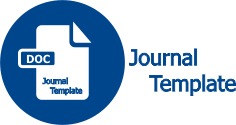Segmentasi Konsumen Pupuk Non-Subsidi Di Provinsi Nusa Tenggara Timur
DOI:
https://doi.org/10.30651/blc.v18i2.7301Abstract
The main goal of the research is to assist market players in entering the fertilizer market in East Nusa Tenggara by identifying and forming a non-subsidized fertilizer consumer segmentation. It is expected to provide market insight for fertilizer producers and determine targets when entering the non-subsidized fertilizer market. This research is a quantitative type described descriptively. The data collection technique was an interview equipped with a questionnaire with a Likert scale of the score. Respondents were food crop and horticultural farmers who use or have used non-subsidized fertilizers. The data analysis technique was the K-Means cluster analysis method. Research succeeded in forming two segments of farmers using non-subsidized fertilizers, passive farmer segment and innovative farmer segment based on psychographics and consumer behavior segmentation variables. Geographic and demographic variable descriptors described the segment profile.
Â
Keywords                   : Fertilizer; Marketing; Non-subsidized; Segment
Correspondence to       : irwan.hermantria-2019@feb.unair.ac.id
Â
Tujuan penelitian ini untuk membantu pelaku pasar dalam memasuki pasar pupuk di Nusa Tenggara Timur dengan mengidentifikasi dan membentuk segmentasi konsumen pupuk non-subsidi. Dengan demikian diharapkan mampu memberikan pengetahuan pasar bagi produsen pupuk dalam menentukan target pasar. Penelitian ini merupakan penelitian kuantitatif yang dideskripsikan secara deskriptif. Teknik pengumpulan data dilakukan melalui wawancara yang dilengkapi dengan kuesioner dengan skor menggunakan skala likert. Responden penelitian ini adalah petani tanaman pangan dan hortikultura yang menggunakan atau pernah menggunakan pupuk non-subsidi. Analisis data menggunakan metode Cluster Analysis K-Means. Penelitian ini berhasil membentuk dua segmen petani pemakai pupuk non-subsidi, yaitu segmen petani pasif dan segmen petani inovatif berdasarkan variabel segmentasi psikografis dan perilaku konsumen. Profil segmen dijelaskan oleh deskriptor variabel geografis dan demografis.
Kata Kunci                 : Non-subsidi; Pemasaran; Pupuk; Segmen
References
Arli, D., Tjiptono, F., Tkaczynski, A., & Bakpayev, M. (2020). Grit: the good, the bad and the ugly. Asia Pacific Journal of Marketing and Logistics, 33 No.5, 1270–1285. https://doi.org/10.1108/APJML-04-2020-0271
Fauzi, A. A., & Sheng, M. L. (2020). Ride-hailing apps’ continuance intention among different consumer groups in Indonesia: the role of personal innovativeness and perceived utilitarian and hedonic value. Asia Pacific Journal of Marketing and Logistics, 33(5), 1195–1219. https://doi.org/10.1108/APJML-05-2019-0332
Food and Agriculture Organization. (2005). Fertilizer Use by Crop in Indonesia. http://www.fao.org/tempref/agl/agll/docs/fertuseindonesia.pdf
Hair Jr, J. F., William, C. B., Babin, B. J., & Anderson, R. E. (2018). Multivariate Data Analysis (8th ed.). Cengage.
Hidayat, A. A. N. (2021). Subsidi Pupuk Rp 33 T Tiap Tahun, Jokowi: Return-nya Apa? Ini Ada yang Salah. https://bisnis.tempo.co/read/1422104/subsidi-pupuk-rp-33-t-tiap-tahun-jokowi-return-nya-apa-ini-ada-yang-salah
Irawan, D. S., & Rochayati, S. (2017). Proyeksi kebutuhan pupuk sektor pertanian melalui pendekatan sistem dinamis. Bogor, Balai Penelitian Tanah, 12, 123–139.
Peraturan Menteri Pertanian Nomor 01 Tahun 2020 Tentang Alokasi dan Harga Eceran Tertinggi Pupuk Bersubsidi Sektor Pertanian Tahun Anggaran 2020, Pub. L. No. Nomor 01 (2020). http://ditlin.tanamanpangan.pertanian.go.id/assets/front/uploads/document/PERMENTAN NOMOR 01 TAHUN 2020 ed.pdf
Kotler, P., & Keller, K. L. (2016). Marketing Management Global Edition (Vol. 15E). Pearson. https://doi.org/10.1080/08911760903022556
Levine, D. M., Stephan, D. F., & Szabat, K. A. (2017). Statistics for Managers Using Microsoft Excel, 8th Edition (8th Editio). Pearson Education Limited.
Pamoengkas, I. (2020). Market Orientation and Value Creation in Improving Business Performance of the Fertilizer Industry in Indonesia. European Research Studies Journal, XXIII(Issue 1), 143–152. https://doi.org/10.35808/ersj/1567
Ragimun, Makmun, & Setiawan, S. (2020). Strategi Penyaluran Pupuk Bersubsidi Di Indonesia. Jurnal Ilmiah M-Progress, 10(1), 1–21. https://journal.universitassuryadarma.ac.id/index.php/ilmiahm-progress/article/view/369
SadÃlek, T. (2019). Consumer preferences regarding food quality labels: the case of Czechia. British Food Journal, 121(10), 2508–2523. https://doi.org/10.1108/BFJ-03-2019-0150
Safeer, A. A., He, Y., Lin, Y., Abrar, M., & Nawas, Z. (2021). Impact of perceived brand authenticity on consumer behavior : an evidence from generation Y in Asian perspective. Brand Authenticity on Consumer Behavior, 71772074. https://doi.org/10.1108/IJOEM-09-2020-1128
Santos, V., Ramos, P., Sousa, B., Almeida, N., & Valeri, M. (2021). Factors influencing touristic consumer behaviour. Journal of Organizational Change Management, 54(0953–4814). https://doi.org/10.17221/283-agricecon
Sekaran, U., & Bougie, R. (2016). Research Methods for Business, A Skill-Building Approach, 7th Edition (7th Editio). John Wiley & Sons Ltd.
Shah, S. A., Azhar, S. M., & Bhutto, N. A. (2019). Halal marketing: a marketing strategy perspective. Journal of Islamic Marketing, 11(6), 1641–1655. https://doi.org/10.1108/JIMA-11-2018-0211
Stephen, C. M. E., & Gbadamosi, A. (2021). Hedonism and luxury fashion consumption among Black African women in the UK : an empirical study. Journal of Fashion Marketing and Management: An International Journal. https://doi.org/10.1108/JFMM-05-2020-0079
Susilowati, S. H. (2016). Urgensi Dan Opsi Perubahan Kebijakan Subsidi Pupuk Urgent Policy Changes in Fertilizer Subsidy. Analisi Kebijakan Pertanian, 14(2), 163–185.
Tim Penyusun Badan Pusat Statistik. (2018). Hasil Survei Pertanian Antar Sensus (SUTAS) 2018 Nasional. In Badan Pusat Statistika.
Tim Penyusun Badan Pusat Statistik Indonesia. (2019). Statistik Indonesia 2019 - Statistical Yearbook of Indonesia 2019.
Zikmund, W., Babin, B., Carr, J., & Griffin, M. (2013). Business Research Methods 9th Edition. In Cengage Learning.















